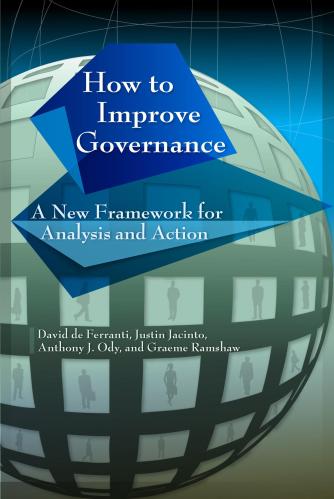This article originally appeared in Governing on May 30, 2017.
A lot of attention, at least in Washington, has focused on Betsy DeVos, President Trump’s secretary of education. Her advocacy for private-school vouchers is certainly controversial, but her ability as secretary to advance that agenda is actually quite limited. That’s because Congress stripped the Department of Education of much of its power in 2015 when it replaced the No Child Left Behind law with the Every Student Succeeds Act (ESSA), returning that authority to the states.
That shift raises the question: Will states use their new authority to improve academic achievement, particularly in high-poverty urban and rural areas? The answer will affect public education much more than anything DeVos will do. State policymakers who are ready to rise to the challenge should do three things.
First, they should stop winging it. Too often, lawmakers and state superintendents have launched reforms based on hunches, anecdotes and fads without first determining if those changes actually improve student success. Most rigorous evaluations of education initiatives — from new curricula to new ways to providing professional development to teachers – find little or no effect compared to the status quo.
Second, state policymakers should press the pause button on launching broad reforms. They should use the next few years to solicit ideas from local practitioners – school-district leaders, principals and teachers – and rigorously test the most promising ones on a small scale first. They could then scale up what worked and pare back or improve what didn’t, creating a cycle of improvement in student achievement.
For sure, this would be a new role for state officials. But ESSA empowers states to take on that role and provides federal funds to pay for it. In particular, ESSA sets aside $1 billion for school improvement, which states could use to run competitions to test out the best local ideas. Those ideas might include innovative curricula, new strategies to address chronic absenteeism, new uses of technology or different ways of structuring schools.
To improve our public schools, governors, state lawmakers and education officials at all levels need to recognize that not every idea that sounds good on paper works in practice.
Third, to catalyze the process of learning what works, states should use a portion of their federal funding, known as Title I, to encourage and support districts to team up and test similar reform strategies in a subset of their schools, comparing outcomes with other schools. These “efficacy networks” would be valuable because any one district’s experience may be too narrow to generalize from. The evidence emerging from the networks could be shared with other school districts around the state.
The value of efficacy networks is already being demonstrated on the ground. The Center for Education Policy Research at Harvard University (where one of us, Thomas Kane, is the faculty director) has created a partnership of 13 urban school districts and charter management organizations that illustrates the type of network a state could create within its borders.
The districts began by collectively deciding on the education interventions they wanted to test. They agreed to pool their data to identify comparison groups and to create a robust, multi-site study. The network, which has been dubbed “Proving Ground,” is currently testing out math software created by researchers at the University of California at Irvine. The software is designed to boost math skills through visual learning, based on brain research about how kids learn through experience.
While states need to play the lead role on efforts like these, the federal government can help. The Department of Education should clarify that state and local governments can use federal dollars to support efficacy networks, since states are unaccustomed to that role. Moreover, through its Regional Education Laboratories, the department could help states identify evidence-based interventions so that states don’t need to start from scratch. And finally, when promising interventions or practices are identified in different state networks, the department should fund larger studies, with nationally representative samples, to verify that those approaches apply broadly.
To improve our public schools, governors, state lawmakers and education officials at all levels need to recognize that not every idea that sounds good on paper works in practice. They need to commit themselves to testing out new ideas on a small scale and only scaling up those that produce meaningful gains in student achievement. It is a disciplined approach to improvement that would benefit all school districts, but is especially important in high-poverty ones that are most in need of catching up.
The authors did not receive financial support from any firm or person for this article or from any firm or person with a financial or political interest in this article. They are currently not an officer, director, or board member of any organization with an interest in this article.
The Brookings Institution is committed to quality, independence, and impact.
We are supported by a diverse array of funders. In line with our values and policies, each Brookings publication represents the sole views of its author(s).









Commentary
Op-edHow school districts could be laboratories of improvement
May 31, 2017